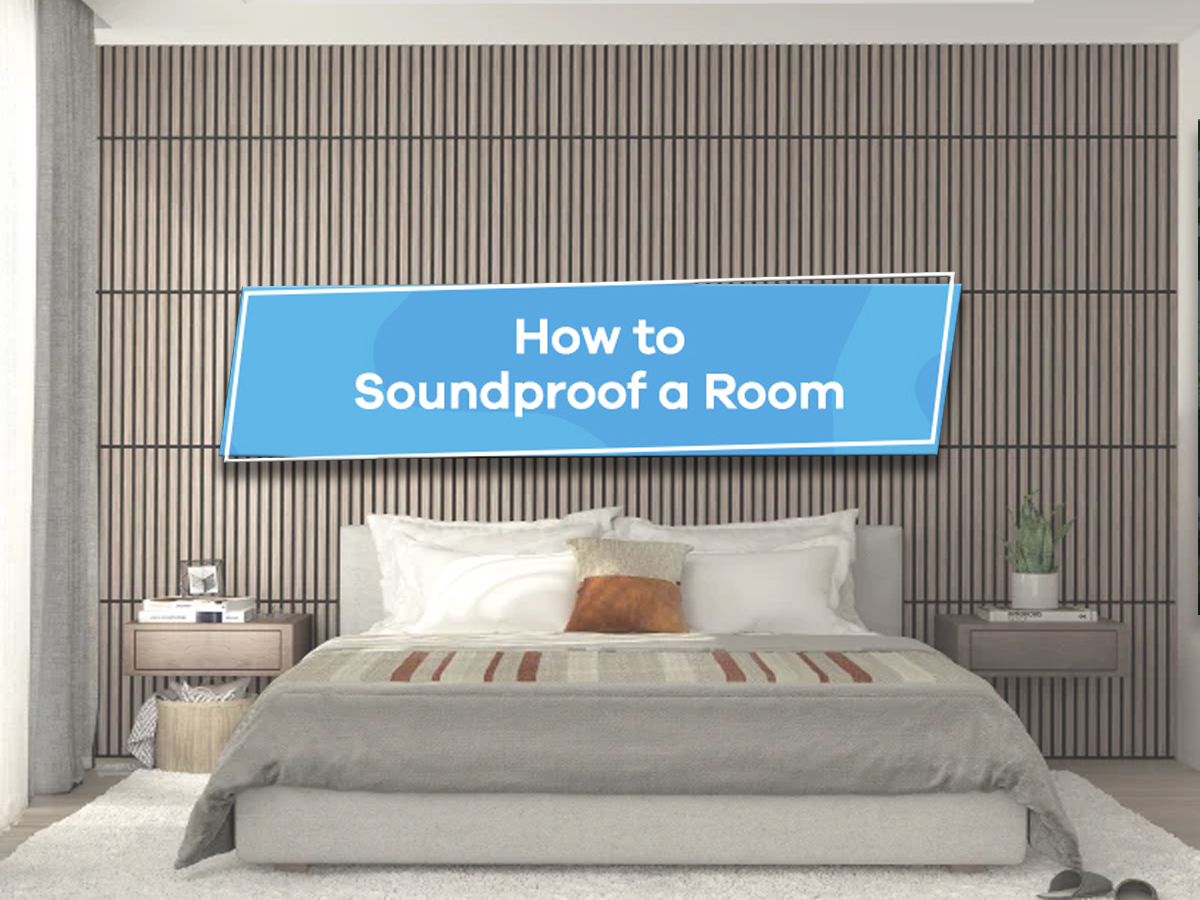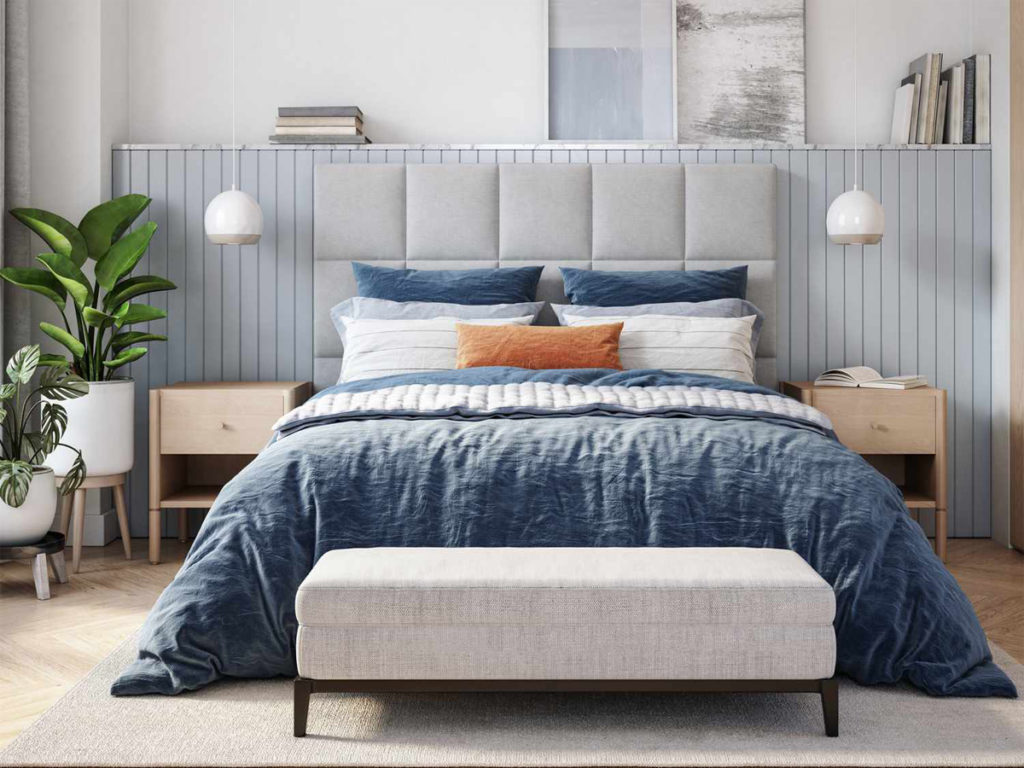
How to soundproof a room
After air pollution, noise pollution is the second most common environmental pollution impacting many urban residents. While the daytime permissible limit is 55dB and the nighttime limit 45dB, cities like Kolkata and Moradabad have recorded alarming levels of noise pollution ranging from 89dB to 114dB (decibels). Today, noise pollution is the largest preventable cause of hearing loss. It can also trigger high blood pressure, hypertension, and disturbed sleep. Hence, it is essential to know how to soundproof a room to reduce noise in your home.
There are two main noise types – airborne and impact. The airborne noise type is transferred directly from the source to the receiver. It includes sounds from loud conversations, a blaring television, loud music, and barking dogs. On the other hand, impact noise type is structural vibration transmitted from a point of impact caused by a vibrating surface. It includes footfalls, children running in the house, and dropping things on the floor. Noise pollution can affect the health and well-being of residents living in an apartment block or villa. Though sound cannot be completely stopped from entering a room, there are ways to reduce it to a normal level. From windows, doors, floors, ceilings, and walls, here are ten ways to soundproof a room: –

1. Add soundproof windows
Living near a main road or construction site can be extremely noisy. So, if you can’t change your home, start by changing the windows. Soundproof windows have emerged as an essential element of high-end urban luxury homes. They are available in double or triple-glazing or laminated glass. They use effective sealing mechanisms, have heavy frames and are especially designed for acoustics. Some of these windows can reduce noise up to 35Db. So, check the Noise Reduction Ratings (NRR) to experience serenity in urban landscapes.
2. Install soundproof wooden doors
High-density soundproof acoustic doors are made from thick hardwood. They look aesthetically pleasing and reduce the noise levels by 30dB. Depending on the level of noise, choose the STC (Sound Transmission Class that measures how a material blocks sound) you require. These doors are thick (25mm, 30mm, or 35mm) and have a seal when they close. Besides hardwood doors, cost-effective options are available in fiberglass and steel with foam cores to absorb noise. While installing a noise-reduction door, ensure no gaps remain between the door, the doorframe, and the wall. Ensure it is sealed properly with special foam, putty, or weatherstripping tapes.
3. Use sound-absorbing flooring
Floors can impact sounds. From footsteps to objects dropping, if it is disturbing you and the neighbour below your apartment, it is time to look for different types of flooring and their Noise Reduction Coefficient (NRC). The higher the NRC level, the better the noise absorption. Some typical soundproofing floorings used in modern homes are hardwood, vinyl, and laminates. Stylish, easy-to-clean, and long-lasting hardwood floors are used in bedrooms. Vinyl flooring is used throughout the house as it has high sound-absorbing qualities. There are also floorings made from engineered wood, cork, and rubber. Marble, kota stone, ceramic tiles, vitrified tiles, and concrete used in Indian homes are usually low on noise absorption. Depending on your requirements, invest in the right flooring.
4. Place carpets and rugs
If you don’t want to install hardwood, engineered wood, laminates, vinyl, cork, or rubber flooring, the cheaper option is end-to-end carpeting or placing area rugs in the room. Since open areas of the floors accentuate echoes, thick piled rugs and carpets are an easy solution to absorb sound waves. Laying a thick wool carpet will absorb six times more noise from higher frequencies. With proper underlay, carpets and rugs can reduce the noise levels between 25dB to 34dB. Furthermore, while rugs and carpets don’t completely block out outside noise, they mainly absorb sound from inside the room. Ultimately, carpets and rugs add aesthetic value and are easy to install or change.
5. Add an insulative layer to your ceiling
With several modern homes having false ceilings, it is easy to install an insulative layer to mute noise from above. Acoustic mineral wool insulation slabs, called rock wool slabs, installed in false ceilings absorb sounds from the room above. Rock wool has a thicker density and better sound absorption compared to cellulose insulation, spray foam insulation, loose-fill insulation, blanket insulation, and mass-loaded vinyl. But before soundproofing your ceiling, consider the need, area to be covered, noise source, STC rating, and budget.
6. Soundproof walls in different ways
From padding walls to hanging up tapestries, there are different ways to make walls stop airborne and impact sound waves. Acoustic wall pads, slabs, rolls, and plasterboards are soundproof materials. They can be inserted in wall cavities or added to the existing wall to reduce noise pollution. They are ideal for home theatre and personal recording rooms or gyms. Padding a wall has to be done by a professional to ensure maximum sound absorption. But if you do not want to spend on good quality acoustic wall pads or panels and are looking for a cheap and attractive alternative, you can hang tapestries on the wall. Soft and thick wall tapestries help to dissipate the noise. Some homeowners who are avid readers build a floor-to-ceiling bookshelf. The large number of books act as a natural soundproofing material.
7. Try other ways to reduce noise
Lastly, you can even reduce noise levels in your home by rearranging the furniture, using energy-efficient appliances that are less noisy, adding sound-reducing thick curtains, and painting the rooms with sound-deadening paint. You can even get a white noise machine to play white noise. It helps induce sleep or work more efficiently by blocking off outside noise. These may not exactly help to soundproof the room, but along with other soundproofing materials used in your windows, doors, floors, ceilings, and walls, it aids in reducing noise levels and absorbing sound.





